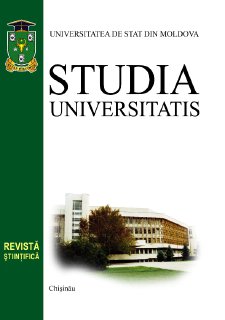EPIDEMIOLOGICAL CHARACTERISTICS OF PARASITE FAUNA IN VULPES VULPES (Linnaeus, 1758) FROM NATURAL AND ANTHROPIZED ECOSYSTEMS OF THE REPUBLIC OF MOLDOVA
Oleg CHIHAI, Anatol SAVIN, Victoria NISTREANU, Alina LARION, Ștefan RUSU, Maria ZAMORNEA, Galina MELNIC, Universitatea de Stat din Moldova Nina TĂLĂMBUȚĂ, Universitatea Liberă Internațională din Moldova, Republica Moldova Diana COȘCODAN, Universitatea de Stat Pedagogică „Ion Creangă”, Chișinău, Republica Moldova
Abstract
The fox is the most common wild carnivore, showing a synanthropic tendency, being widespread on all continents. They have a primary role in the biology of the development cycles of a large number of parasitic species, including those with zoonotic impact. The aim of the paper is the eco-parasitological study regarding the determination
of the epidemiological characteristics of the parasite fauna in Vulpes vulpes (Linnaeus, 1758) from various natural
and anthropogenic biotopes of the Republic of Moldova. The parasitological investigations were carried out according to the methods of Popova, Baermann, Fuileborn, Darling and through successive washings, in the laboratory of
Parasitology and Helminthology of the Institute of Zoology. The results of the investigations show an increased level
of infestation (100%) in the investigated foxes. Taxonomically, the parasite species fall into 5 classes, 10 families, 11
genera and about 12 species (Isospora canis - 14,3%, Alaria allata - 51,0%, Mesocestoides lineatus - 21,7%, Taeniidae spp - 27,0%, Syphacia obvelata - 17,0%, Strongyloides stercoralis - 13,3%, Toxocara canis - 59,0%, Toxascaris
leonine - 65,5%, Ancylostoma caninum - 8,7%, Trichuris vulpis - 26,1%, Trichuris muris - 4,4%, Capilaria hepatica
- 35,0%. The share of species from class Sporozoais of 8,3%, from class Trematoda - 8,3%, from class Cestoda - 16,7%, from class Secernentea - 41,7%, and from class Adenophorea - 25,0%. Analyzing the parasitic species according
to epidemiological criteria, we found that 10 species (83.3%) with increased spread have a zoonotic impact (A. allata,
M. lineatus, Taenidae, S. obvelata, S. ratti, T. canis, T. leonina, A. caninum, C. hepatica, T. vulpis), with a major risk for
public health and the identified invasions, can also totally (100%) parasitize domestic animals and hunting fauna.
Keywords: Vulpes vulpes, zoonoze, helminthoze.


